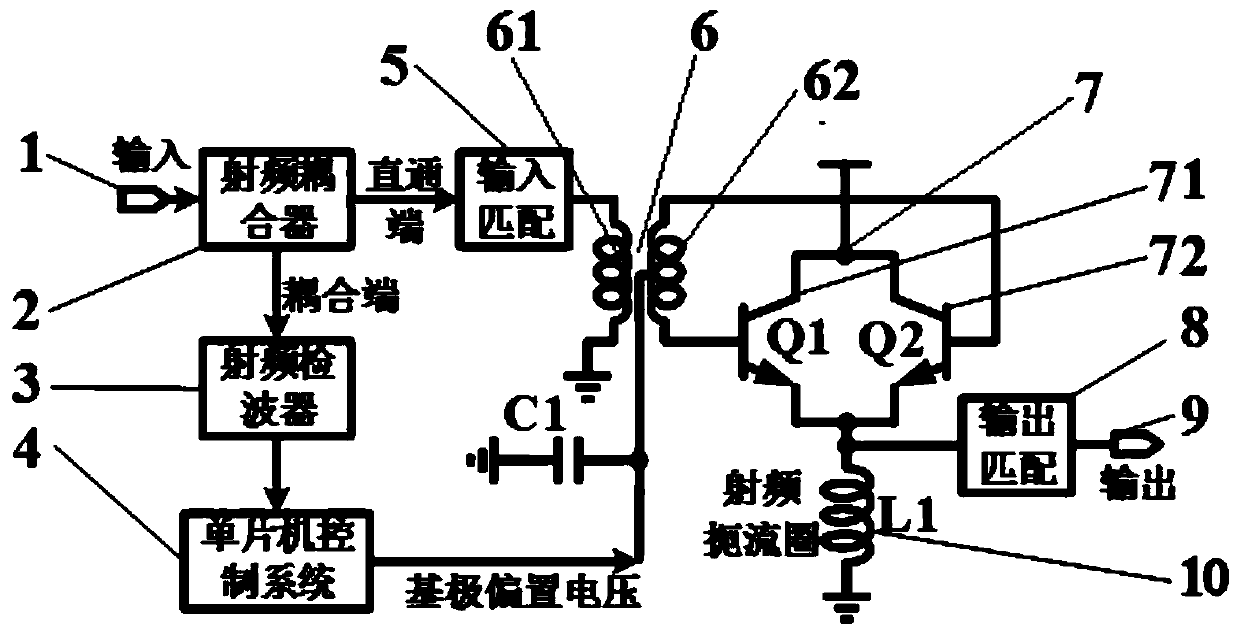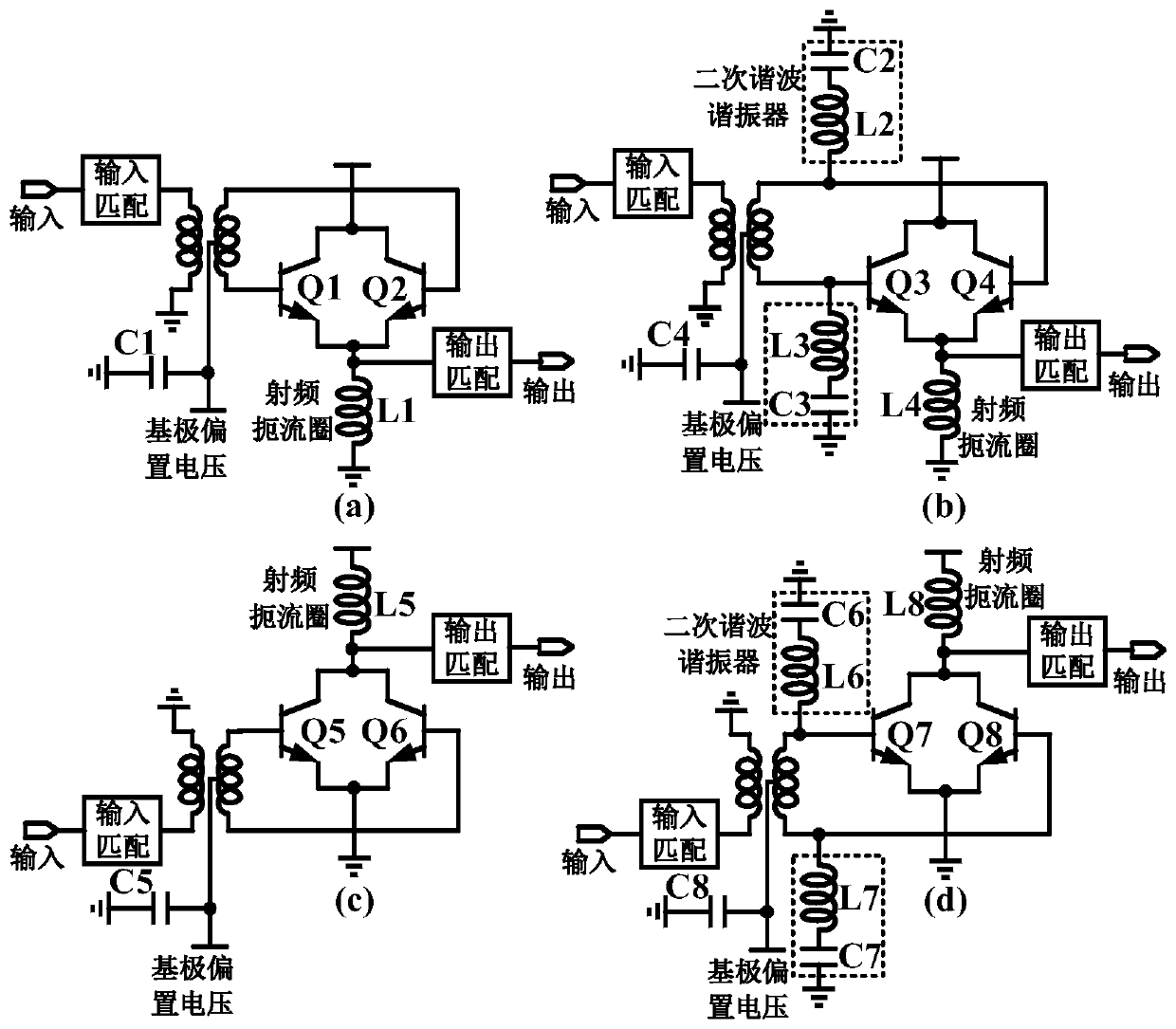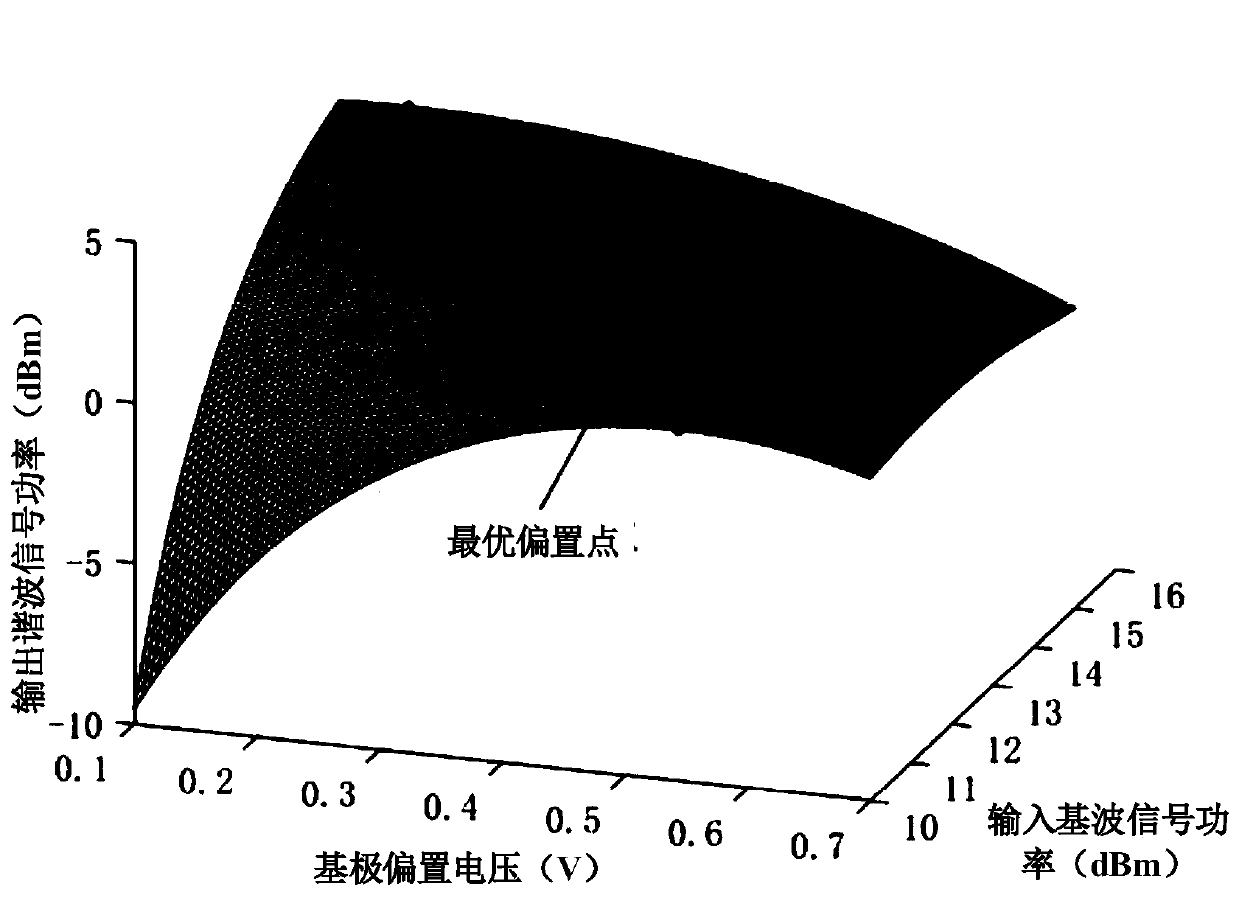Millimeter wave frequency multiplier circuit based on relationship between active millimeter wave frequency multiplier base bias voltage and fundamental wave input signal power amplitude
A technology of input signal and base bias, applied in the direction of power oscillators, electrical components, etc., can solve the problem of small harmonic output signal power and frequency conversion gain, so as to improve frequency conversion gain, improve harmonic output signal power, and improve The effect of conversion efficiency
- Summary
- Abstract
- Description
- Claims
- Application Information
AI Technical Summary
Problems solved by technology
Method used
Image
Examples
Embodiment 1
[0026] refer to figure 1 , this embodiment provides a millimeter-wave frequency multiplier circuit based on the relationship between the base bias voltage of the active millimeter-wave frequency multiplier and the power amplitude of the fundamental wave input signal, and the millimeter-wave frequency multiplier system uses a silicon-based bipolar type metal oxide semiconductor integrated circuit technology. Likewise, the millimeter wave can be produced in other ways, and there is no specific requirement, and the process in this embodiment is just one of them.
[0027] The millimeter wave frequency multiplier system includes a fundamental wave signal input terminal 1, a radio frequency coupler 2, a radio frequency detector 3, a single-chip microcomputer control system 4, an input matching 5, a millimeter wave transformer 6, a frequency multiplier core 7, an output matching 8, a harmonic Wave signal output terminal 9 and RF choke coil L110. The fundamental wave signal input te...
PUM
 Login to View More
Login to View More Abstract
Description
Claims
Application Information
 Login to View More
Login to View More - R&D
- Intellectual Property
- Life Sciences
- Materials
- Tech Scout
- Unparalleled Data Quality
- Higher Quality Content
- 60% Fewer Hallucinations
Browse by: Latest US Patents, China's latest patents, Technical Efficacy Thesaurus, Application Domain, Technology Topic, Popular Technical Reports.
© 2025 PatSnap. All rights reserved.Legal|Privacy policy|Modern Slavery Act Transparency Statement|Sitemap|About US| Contact US: help@patsnap.com



